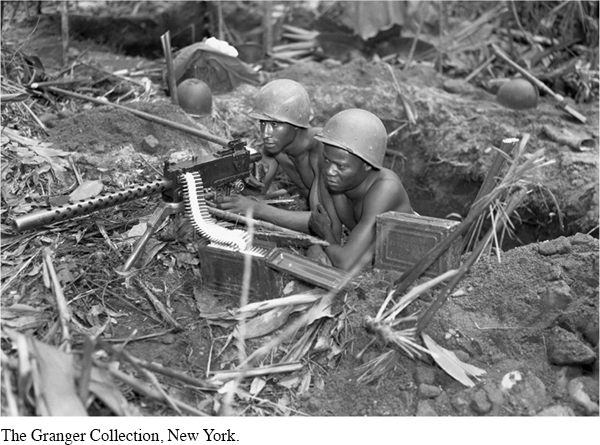The American Promise: Printed Page 722
The American Promise, Value Edition: Printed Page 660
The American Promise: A Concise History: Printed Page 750
Building a Citizen Army
In 1940, Roosevelt encouraged Congress to pass the Selective Service Act to register men of military age who would be subject to a draft if the need arose. More than 6,000 local draft boards registered more than 30 million men and, when the war came, rapidly inducted them into military service. In all, more than 16 million men and women served in uniform during the war, two-
The Selective Service Act prohibited discrimination “on account of race or color,” and almost a million African American men and women donned uniforms, as did half a million Mexican Americans, 25,000 Native Americans, and 13,000 Chinese Americans. The racial insults and discrimination suffered by all people of color made some soldiers ask, as a Mexican American GI did on his way to the European front, “Why fight for America when you have not been treated as an American?” Only black Americans were trained in segregated camps, confined in segregated barracks, and assigned to segregated units.
The American Promise: Printed Page 722
The American Promise, Value Edition: Printed Page 660
The American Promise: A Concise History: Printed Page 750
Page 724Most black Americans were consigned to manual labor, and relatively few served in combat until late in 1944, when the need for military manpower in Europe intensified. Then, as General George Patton told black soldiers in a tank unit in Normandy, “I don’t care what color you are, so long as you go up there and kill those Kraut sonsabitches.”

Homosexuals also served in the armed forces, although in much smaller numbers than black Americans. Allowed to serve as long as their sexual preferences remained covert, gay Americans, like other minorities, sought to demonstrate their worth under fire. “I was superpatriotic,” a gay combat veteran recalled. Another gay GI remarked, “Who in the hell is going to worry about [homosexuality]” in the midst of the life-